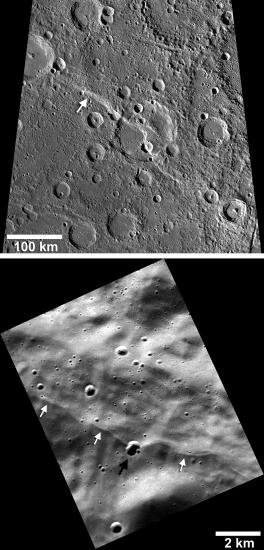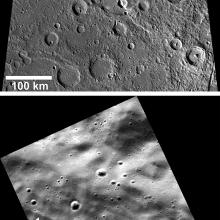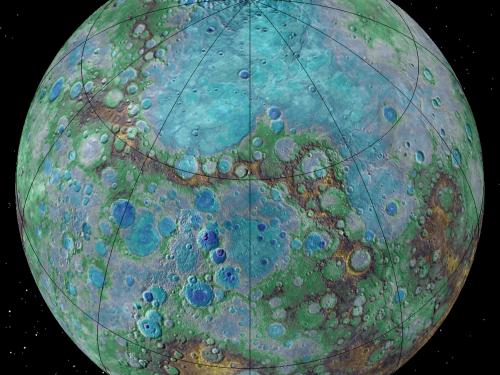
Revealing Mercury’s Great Valley
Nov 16, 2016
At their core, planetary missions are about exploration, pure and simple. It’s hard to beat the excitement of discovering a new feature on the surface of a planet that’s being imaged by spacecraft for the first time. I had this experience many times during the MESSENGER mission.
One of these occasions was during MESSENGER’s second flyby of Mercury. In the approach images of the hemisphere unseen by an earlier mission, Mariner 10, when the spacecraft was still too far from Mercury to clearly resolve details of the surface, we could just make out the hint of a large impact basin. It turned out to be one of the youngest and largest impact basins on Mercury, now named the Rembrandt basin. The Rembrandt basin is not only remarkable for its size and youth; it’s deformed by a major fault that cut across its rim and offset the basin floor. This giant fault scarp, a cliff-like landform now named Enterprise Rupes, turned out to be the largest fault scarp on Mercury.
As significant as these newly detected features were, another remarkable landform in this same region of Mercury went undiscovered until the dimension of topography was added. Obtaining topographic data for Mercury was a major goal of the MESSENGER mission. Among the instruments on the spacecraft was a laser altimeter designed to very accurately measure the relief of Mercury’s surface. Because of MESSENGER’s very elliptical orbit, the laser altimeter could only return data in the northern hemisphere, where the spacecraft altitude was the lowest. To measure the topography in the southern hemisphere, stereo images of the surface were collected. From these stereo images, a digital elevation model of the Rembrandt region was generated. What was revealed was a great valley—a valley like nothing else found on Mercury!
Mercury’s great valley is about 400 kilometers (250 miles) wide with its floor as much as 3 kilometers (2 miles) below the surrounding terrain. The valley is more than 1,000 kilometers (600 miles) long and extends into the Rembrandt basin. The valley is bound by two large fault scarps, and one is Enterprise Rupes. These and other large and small fault scarps were formed as Mercury’s interior has cooled, causing the planet to shrink. So, is Mercury’s great valley just the result of two large and parallel fault scarps? No, the elevation of the valley floor is below the elevation of the terrain beyond the bounding, mountainous faults scarps. This means the valley floor was lowered by the same mechanism that formed the fault scarps.
The most likely explanation for Mercury’s great valley is long-wavelength buckling of the planet’s crust and upper mantle, its lithosphere. The valley’s bounding faults formed when Mercury’s lithosphere bent and crustal rocks were thrust upward while the developing valley floor sagged downward. The sagging valley floor lowered part of the rim of the Rembrandt basin.
On Earth, the Great Rift Valley in East Africa was caused by the pulling apart of lithospheric plates due to plate tectonics. Mercury’s great valley, on the other hand, is the result of global contraction of a shrinking one-plate planet. Earth has examples of lithospheric buckling involving both oceanic and continental plates. Mercury’s great valley may be the first evidence of lithospheric buckling on our Solar System’s smallest rocky planet.
What a surprise to find a great valley on Mercury – but a great valley that includes the planet’s largest fault scarp and one of its largest impact basins – that’s truly remarkable! It’s these surprises that make exploration so compelling and planetary missions so important.
MESSENGER is among many missions that aim to uncover the secrets of our universe. Do you think it’s important to explore our universe? Why or why not? What do you hope we’ll discover next? Share your thoughts with us @airandspace. You can also learn more about MESSENGER on the project page or @MESSENGER2011 on Twitter.
Related Topics
You may also like
We rely on the generous support of donors, sponsors, members, and other benefactors to share the history and impact of aviation and spaceflight, educate the public, and inspire future generations. With your help, we can continue to preserve and safeguard the world’s most comprehensive collection of artifacts representing the great achievements of flight and space exploration.







